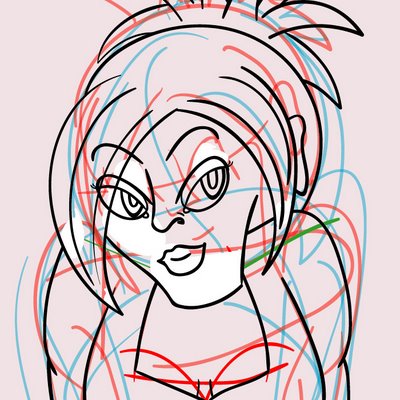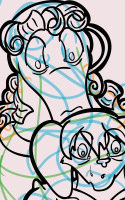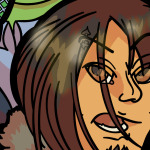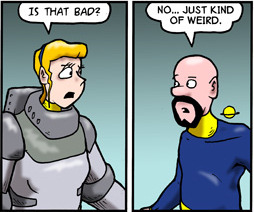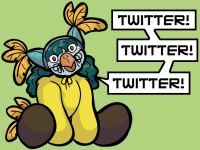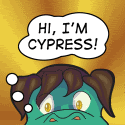Hand-Drawn vs. 3D: Why Realism Isn't Your Friend
There's a rather heated discussion going on in the Comic Genesis forums right now about CGI comics: I say 'heated' because one of the CGI artists there is taking much more offense to the statements and waxing eternal about how "People refuse to give CGI a chance" being made than realizing that it takes more than 'good' art, regardless of the medium, to tell a story in a comic.
I have seen countless artists who put up lovingly crafted pieces of art in their comics. You can tell there was plenty of effort involved in the art itself, but not nearly so much in the story or the staging of the work itself. It's the old conflict between being a cartoonist and being an artist; You can either try to compete with millenia of thought on light and texture and shading, or you can take just enough of each to make your work look acceptable and focus more on being able to tell a story beyond all else.
I'm not saying that CGI is inferior to drawn work; however, I AM saying that the hyperrealistic worlds of Poser, Second Life, and Pixar don't belong in comic books, at least not without a LOT of work into figuring out just what makes a comic good. Certainly CGI can become just as 'awesome' artwise, if not better, than hand-drawn works. However, when we get into panels, lettering, word bubbles, and general portrayal of action, we see the real flaws in CGI comics.
People are used to seeing 'comic' people in 'comic' panels, with 'comic' lettering and 'comic' effects. Realism likewise requires that the narrative that goes with these pictures suits the pictures themselves. Ergo, it's not JUST about the art; it's about the atmosphere this art is presented in.
Imagine seeing a comic character being punched out. When dealing with drawn art, you have all sorts of tools to assist your eye: sound effects, speed lines, deformation of certain body parts involved, and other motion cues that artists have honed and tapped into over several decades of development and cartoon evolution. Because we are used to these cues, we recognize and accept their placement within the comic panel.
Now imagine a photograph of a person being punched out: We don't see the motion lines, speed blurs, or other handy cues that a comic has; if we're lucky, we get some of these superimposed, but the end result is that the superimposed effects don't gel with the photograph, because we are used to seeing them in less realistic conditions. CGI can be compared in the same way.
Now, for further comparison, let's make that photograph a five-second film clip from a movie, so we can see the punch as it's being performed. We can see the motion, hear the sounds involved, and watch the deformation (brief as it may be) occur in the displacement between fist and face, and so the comic elements we depended on are no longer necessary, because we are now looking at animation.
CGI in Animation makes sense the same reason live-action makes sense; we don't need the comic cues of motion and effect to bring the scenes to life, because they're already framed within a medium of motion and effect itself. The motion automatically makes things more realistic to us, and so the added realism of CGI dovetails with it much more nicely in this dynamic medium of flim that it does in the static medium of comics.
Accepting CGI, by nature of the affordances you give up when going from cartoon realism to a hyperrealistic style, means you also give up the ability to tell the same type of story you would be able to depict in a drawing, as well as significantly limiting the type of environment that makes sense otherwise in comics.
As long as the art is merely 'realistic within its medium', it becomes easier to find the right atmosphere for the work. One of my favorites, The Wizard's Tale (an excellent comic book, though sadly just a one-off) bridges this problem nicely, not only combining realism with comic art, but also in its lightly medieval lettering, the statements and other comic elements blending into the world around it, rather than clashing against it.
If you have a crisp environment with crisp words in crisp bubbles, then the art should be just as clean as the surroundings you have them in; if the art is slightly rough at the edges, the environment should be rough to fit. In Pogo, Walt Kelly matches the wild, only slightly tamed environment of the comic with equally bold text and loose word bubbling. The art is secondary compared to the comic's design and the story within it. It either all works together to keep the reader's eyes in the right place, or it will clash with itself and tear everything within the story apart.
Yes, it shouldn't be impossible to make a CGI comic that can match hand-drawn storytelling. But I've not seen it yet.

